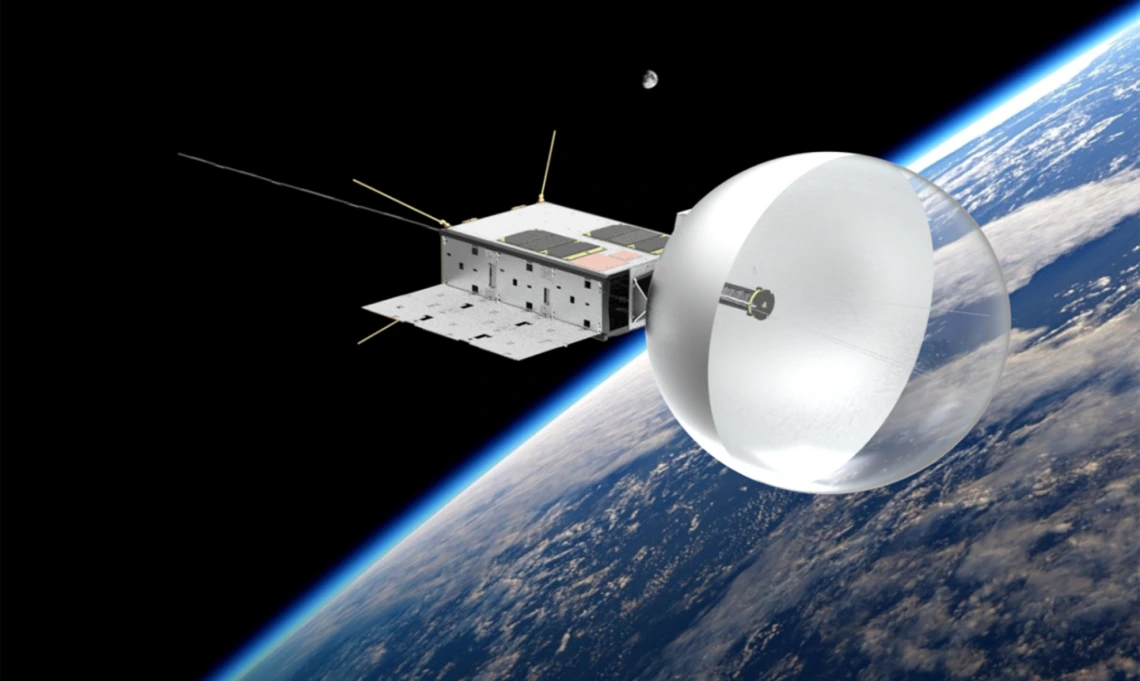CatSat in Orbit
Students at the U of A built a satellite. NASA put it into space.

CatSat will orbit Earth roughly once every 95 minutes for the next year, studying radio transmission in the ionosphere and testing an ultralight inflatable antenna.
Aman Chandra/FreeFall Aerospace
Shae Henley ’24 breathed a sigh of relief when CatSat finally sent signals back to Tucson last summer. She has worked on the student-built satellite since her first year as a University of Arizona undergrad.
Working on the project “has been the most helpful thing at the university,” says Henley, who is now an aerospace engineering master’s student. “Classes give you a solid math and physics background but not necessarily hands-on experience.”
The mission is part of NASA’s CubeSat Launch Initiative, which fosters growth in the small-sat industry. U of A tech spinoff FreeFall Aerospace and Tucson-based Rincon Research are partners on the project.
CatSat left Earth onboard the Firefly Aerospace Alpha rocket as Henley and others watched the rocket’s plume streak across the Tucson sky. U.S. Space Force tracking accounted for seven of the eight nanosatellites scheduled for deployment from the spacecraft. But not a sound from CatSat.
Henley and the team of a dozen or so undergrads and grad students who had built CatSat for over four years listened for signals, but heard nothing. Finally, two weeks later, the team began receiving telemetry data, and Firefly confirmed the satellite’s deployment.
Since then, the team has tracked the satellite as it passes over Tucson — twice in the morning and twice at night — observing what it can do and sending photo commands.
“With the pictures, we are troubleshooting — making sure we’re pointing in the correct direction and that our frames are good for future data recordings,” says supervisor Adrien Bouskela, an aerospace graduate student and altitude and orbital control systems lead. “It is nice to have a mission that is by students, for students, because everyone is learning and transmitting knowledge.”
Now, the students will begin collecting data from the atmosphere’s ionospheric layer, which is used by radio enthusiasts to broadcast information throughout the world, with hopes that the research will yield improvements for radio transmissions. They also will test an inflatable antenna that is expected to dramatically increase the total data return, including high-definition imagery, and the overall effectiveness of CubeSats and other small satellites.
